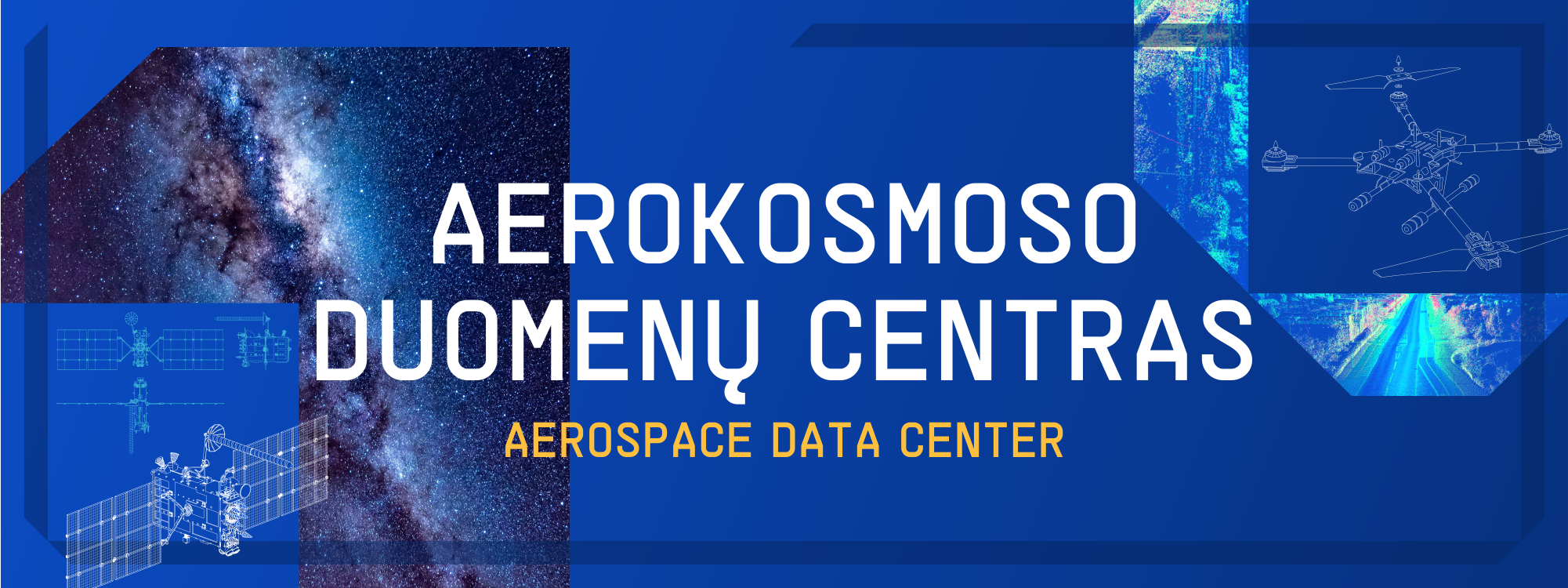Aerospace Data Center
Have any questions?
Please contact us
Phone +370 5 274 4815
E-mail crypt:PGEgaHJlZj0ibWFpbHRvOmFkY0B2aWxuaXVzdGVjaC5sdCI+YWRjQHZpbG5pdXN0ZWNoLmx0PC9hPg==:xx
.png)
Aerospace Data Center
The history of remote sensing began around 1840 when hot air balloons took the first photographs of the earth with a recently invented camera. Technologies in this field were developed during World War I for intelligence and evolved into a separate branch during World War II. The next step is for the cameras to be flown into space and then integrated into satellites. Remote sensing, as an operational system for collecting information about the Earth on a recurring schedule, matured in the 1970s, when devices with a Landsat satellite were flown. Soon the first-world countries began to develop and launch their own satellites and build their networks.
At present, remote sensing is carried out by satellites, airplanes, and helicopters, and the use of unmanned aerial vehicles is gaining popularity due to its rapid and relatively cheap application to a wide range of data collection. In summary, remote sensing is popular for collecting and interpreting information about an object without having physical contact with the object. Remote sensing is used in many fields, including geography, land surveying, and most areas of Earth science (e.g., hydrology, ecology, meteorology, oceanography, glaciology, geology); it is also relevant to the military industry, intelligence, various commercial, economic, state and urban planning or humanitarian activities, disaster relief.
With the development of individual technologies (cameras, active sensors, and manned and unmanned aircraft), the need for research, system development, and adaptability work is constantly increasing. The drone market started around 2010 and reached a sharp growth spike in 2018. According to the data of December 2020, this market is forecast to grow steadily until 2027. the global market value will be 56.18 billion. USD.
VILNIUS TECH AGAI units and research groups cooperate with the Lithuanian Armed Forces, Naval Forces, SBGS. It has developed more than 10 prototypes of unmanned aerial vehicles (BOs) for various remote data collection needs, the application of BOs and small satellites (nanosatellites) and is developing six doctoral students.
At present, remote sensing is carried out by satellites, airplanes, and helicopters, and the use of unmanned aerial vehicles is gaining popularity due to its rapid and relatively cheap application to a wide range of data collection. In summary, remote sensing is popular for collecting and interpreting information about an object without having physical contact with the object. Remote sensing is used in many fields, including geography, land surveying, and most areas of Earth science (e.g., hydrology, ecology, meteorology, oceanography, glaciology, geology); it is also relevant to the military industry, intelligence, various commercial, economic, state and urban planning or humanitarian activities, disaster relief.
With the development of individual technologies (cameras, active sensors, and manned and unmanned aircraft), the need for research, system development, and adaptability work is constantly increasing. The drone market started around 2010 and reached a sharp growth spike in 2018. According to the data of December 2020, this market is forecast to grow steadily until 2027. the global market value will be 56.18 billion. USD.
VILNIUS TECH AGAI units and research groups cooperate with the Lithuanian Armed Forces, Naval Forces, SBGS. It has developed more than 10 prototypes of unmanned aerial vehicles (BOs) for various remote data collection needs, the application of BOs and small satellites (nanosatellites) and is developing six doctoral students.
Services to science and business
Main TECH directions:
- adaptation of unmanned aircraft payload
- creation and development of specialized aircraft systems for various remote data collection goals
- improvement of small satellite (nanosatellite) data transmission, and other systems.
- georeferencing of any geospatial data
- preprocessing and preparing of any point clouds
- any deliverables from photogrammetric images
Other:
- consultations for businesses and institutions
- basic, essential and in-depth training
Call now to discuss!
-
- Page administrators:
- Laurynas Šišovas
- Virginija Leonavičiūtė
- Karolina Kardokaitė
- Ugnė Daraškevičiūtė


